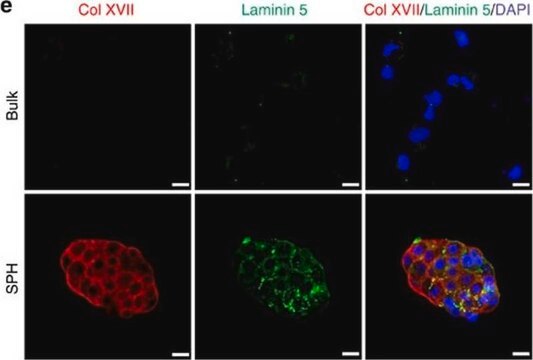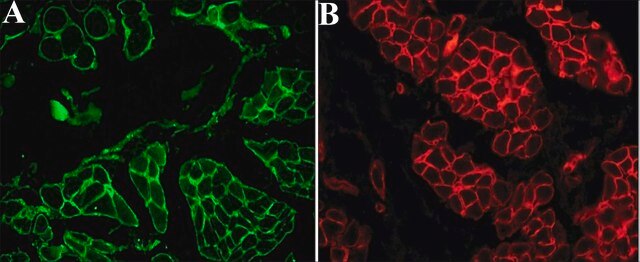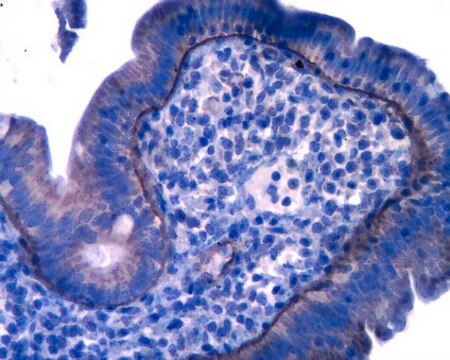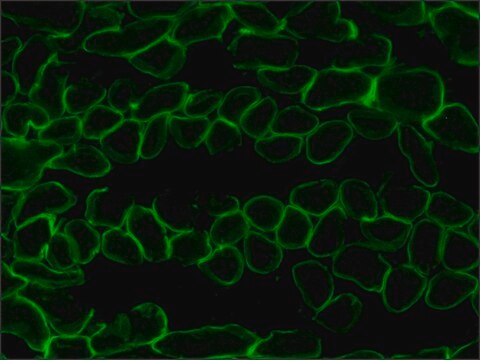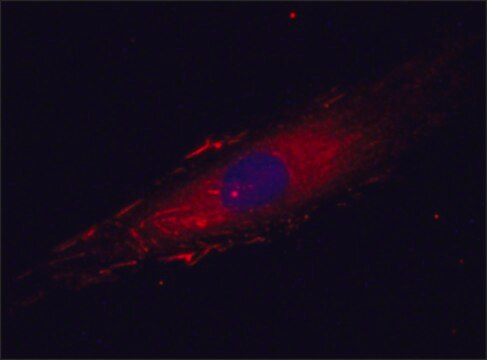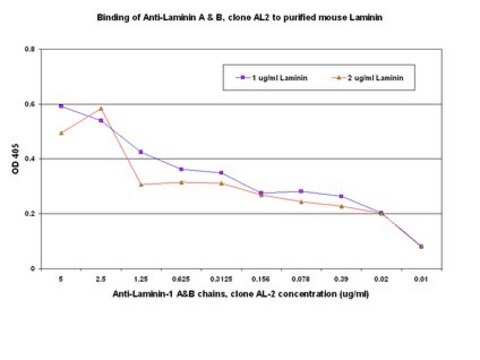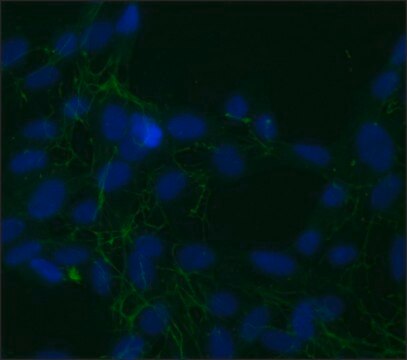MAB1949
Anti-Laminin-5 Antibody, clone P3E4
clone P3E4, Chemicon®, from mouse
Synonym(s):
Epiligrin
About This Item
Recommended Products
biological source
mouse
Quality Level
antibody form
purified antibody
antibody product type
primary antibodies
clone
P3E4, monoclonal
species reactivity
human
manufacturer/tradename
Chemicon®
technique(s)
ELISA: suitable
immunocytochemistry: suitable
immunohistochemistry: suitable
immunoprecipitation (IP): suitable
western blot: suitable
isotype
IgG1
suitability
not suitable for activity/function inhibition
NCBI accession no.
UniProt accession no.
shipped in
wet ice
target post-translational modification
unmodified
Gene Information
human ... LAMC2(3918)
Related Categories
General description
The laminin-5 isoform (nicein, epiligrin, and kalinin) is abundant in transitional epithelium, stratified squamous epithelia, lung mucosa, and other epithelial glands (Kallunki et al., 1992; Stahl et al., 1997). Laminin-5 is a heterotrimer consisting of alpha3, beta3, and gamma2 subunits that associate via large helical regions to produce a cruciform-shaped molecule (Rousselle et al., 1991 J. Cell Biol. 114: 567-576; Baker et al., 1996 J. Cell Sci. 109: 2509-2520). Laminin-5 is synthesized initially as a 460-kD molecule that undergoes specific processing to a smaller form after being secreted into the extracellular matrix (Marinkovich et al., 1992 J. Biol. Chem. 267: 17900-17906; Vailly et al., 1994 Eur. J. Biochem. 219: 209-218; Matsui et al., 1995 J. Biol. Chem. 270: 23496-23503). The size reduction is a result of processing the 3 and 2 subunits from 190-200 to 160 kD and from 155 to 105 kD, respectively (Marinkovich et al., 1992; Vailly et al., 1994; Matsui et al., 1995). {Goldfinger, LE (1998) J Cell Biol 141(1):255-265}.
Specificity
Immunogen
Application
Immunocytochemistry
Immunoblotting: (non-reducing)
Immunoprecipitation
ELISA
Optimal working dilutions must be determined by end user.
Cell Structure
ECM Proteins
Physical form
Storage and Stability
Other Notes
Legal Information
Disclaimer
Not finding the right product?
Try our Product Selector Tool.
WGK
WGK 1
Flash Point(F)
Not applicable
Flash Point(C)
Not applicable
Certificates of Analysis (COA)
Search for Certificates of Analysis (COA) by entering the products Lot/Batch Number. Lot and Batch Numbers can be found on a product’s label following the words ‘Lot’ or ‘Batch’.
Already Own This Product?
Find documentation for the products that you have recently purchased in the Document Library.
Our team of scientists has experience in all areas of research including Life Science, Material Science, Chemical Synthesis, Chromatography, Analytical and many others.
Contact Technical Service